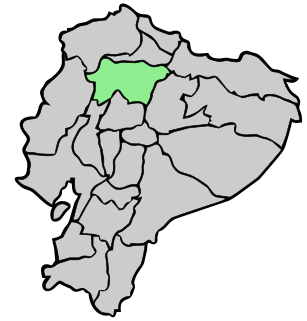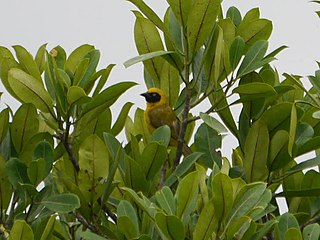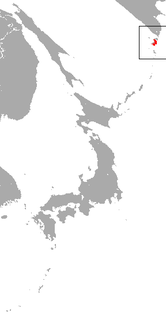
The conservation status of a group of organisms indicates whether the group still exists and how likely the group is to become extinct in the near future. Many factors are taken into account when assessing conservation status: not simply the number of individuals remaining, but the overall increase or decrease in the population over time, breeding success rates, and known threats. Various systems of conservation status exist and are in use at international, multi-country, national and local levels as well as for consumer use.

Notiosorex cockrumi, also called Cockrum's gray shrew or Cockrum's desert shrew, is a tiny species of shrews named in 2003. This red-toothed shrew, which is as light as a penny, is the first new mammal species from Arizona since 1977. Its range extends from Arizona to central Sonora, Mexico.

A species that is extinct in the wild (EW) is one that has been categorized by the International Union for Conservation of Nature as known only by living members kept in captivity or as a naturalized population outside its historic range due to massive habitat loss.
Aetheolaena cuencana is a species of flowering plant in the family Asteraceae. It is found only in Ecuador. Its natural habitats are subtropical or tropical moist montane forests and subtropical or tropical high-altitude shrubland. It is threatened by habitat loss.
Aetheolaena is a genus of flowering plant in the aster family, Asteraceae.
Aetheolaena decipiens is a species of flowering plant in the family Asteraceae. It is endemic to Ecuador, where it grows as a vine in high Andean forest habitat.
Aetheolaena hypoleuca is a species of flowering plant in the family Asteraceae. It is found only in Ecuador. Its natural habitat is subtropical or tropical high-altitude grassland. It is threatened by habitat loss.
Aetheolaena involucrata is a species of flowering plant in the aster family, Asteraceae. It is endemic to Ecuador, where it is considered to be "characteristic" of the Andean flora.
Aetheolaena ledifolia is a species of flowering plant in the family Asteraceae. It is found only in Ecuador. Its natural habitat is subtropical or tropical moist montane forests. It is threatened by habitat loss.
Aetheolaena lingulata is a species of flowering plant in the family Asteraceae. It is found only in Ecuador. Its natural habitats are subtropical or tropical moist montane forests and subtropical or tropical high-altitude shrubland. It is threatened by habitat loss.
Aetheolaena mochensis is a species of flowering plant in the family Asteraceae. It is found only in Ecuador. It is threatened by habitat loss.
Aetheolaena mojandensis is a species of flowering plant in the family Asteraceae. It is found only in Ecuador. Its natural habitats are subtropical or tropical moist montane forests and subtropical or tropical high-altitude grassland. It is threatened by habitat loss.
Aetheolaena pichinchensis is a species of flowering plant in the family Asteraceae. It is found only in Ecuador. Its natural habitats are subtropical or tropical moist montane forests and subtropical or tropical high-altitude shrubland. It is threatened by habitat loss.
Aetheolaena rosana is a species of flowering plant in the family Asteraceae. It is found only in Ecuador. Its natural habitat is subtropical or tropical moist montane forests. It is threatened by habitat loss.

Senecio antisanae is a species of Senecio in the aster family found only in the subtropical or tropical moist montane region of Ecuador. It is threatened by habitat loss.

Senecio iscoensis or Aetheolaena senecioides is a flowering plant in the aster family. It is found only in subtropical and tropical dry shrubland in Ecuador. It is threatened by habitat loss.

Bannerman's weaver is a species of bird in the weaver family, Ploceidae. It is found in Cameroon and Nigeria. Its natural habitat is subtropical or tropical moist montane forests. It is threatened by habitat loss.

The Somali hedgehog is a species of mammal in the family Erinaceidae. It is endemic to Somalia and Somaliland. The Somali hedgehog is nocturnal.

The Paramushir shrew is a species of mammal in the family Soricidae. It is endemic to Russia. Its natural habitat is temperate forests. It is threatened by habitat loss.

Day's shrew is a species of mammal in the family Soricidae. It is endemic to India. Its natural habitat is subtropical or tropical dry forests. It is threatened by habitat loss.








